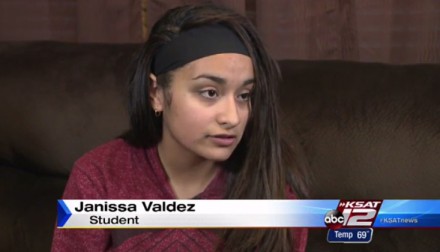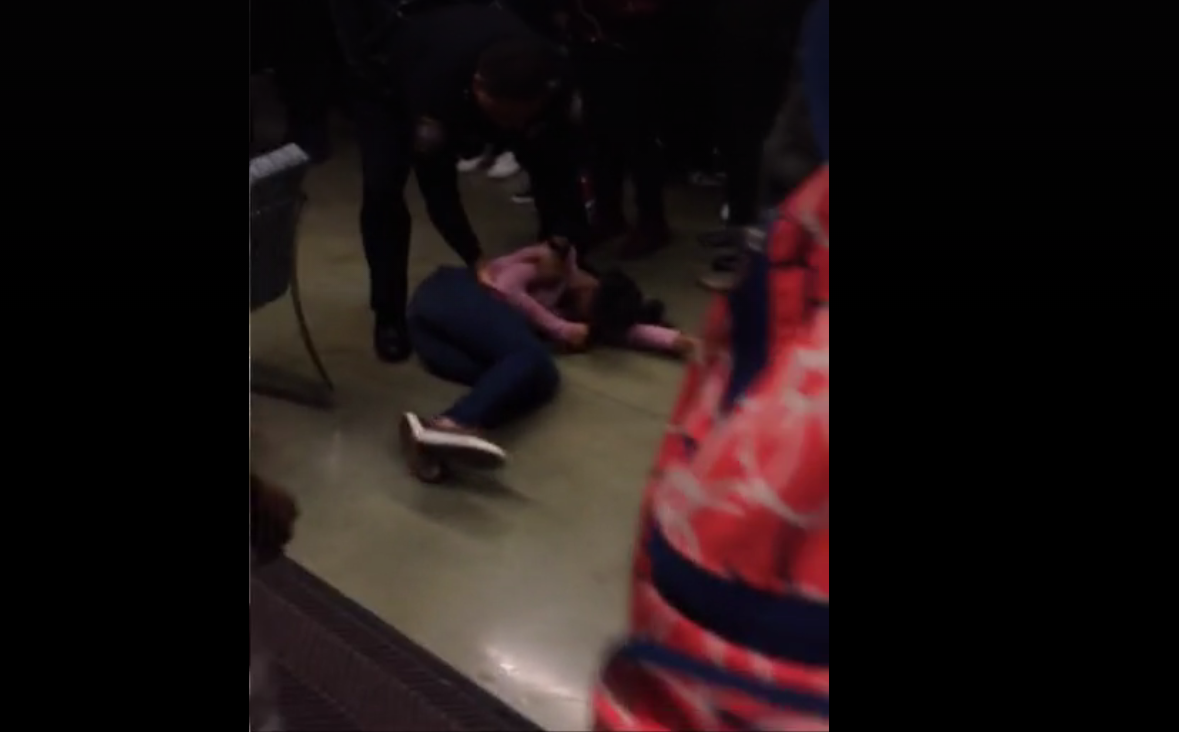Abortion rights, women of color, and LGBTQI+ people are under attack. Pledge to join us in fighting for gender justice.
Asking the Right Questions about Policing Schools

Another day goes by; another “viral” video of a police officer assaulting a student emerges. The latest from the San Antonio Independent School District shows a school resource officer (SRO) body slamming a 12-year-old girl against pavement—the side of her head hitting the brick sidewalk. Considering that these assaults are occurring in the very schools that are supposed to keep these students safe, the outcry is certainly warranted. But if you look at the way the story is being reported and public discourse around this latest incident, it becomes apparent that the right questions are not being asked.
To be clear, the first question should not be what that girl did to make the officer behave that way. That should not matter. There is nothing an unarmed 12-year old could do to justify that kind of violent behavior from anyone—let alone a school resource officer. Questions like this make it acceptable to criminalize children for acting like children, and give the adults in charge of their care the authority to harm them.
The first question should be why school resource officers, rather than school counselors who are trained in deescalating conflict, are the first ones called to deal with difficult students. Another worthwhile inquiry is what will be the long-term impact on the little girl who experienced the trauma of this assault? What will be the impact on all of the middle school children who watched it happen? And most importantly, what did that sixth-grade girl learn from that interaction with the officer?
The Answer Is Not More Police in Schools
A report from the National Center of Education Statistics shows that 63 percent of public middle schools employed SROs during the 2013-14 school year. Despite the prevalence of SROs in schools, only 12 states have laws with training requirements for officers who are sent into classrooms. Even fewer have laws that require training on how to deal with children.
The increase in school resource officers is tied to the 1999 Columbine High School mass shooting, after which the public became increasingly concerned about the safety of students while they were at school. However, the schools in which mass shootings have occurred do not resemble the schools where SROs are most likely to be present. SROs tend to be placed in schools where most of the students are girls and boys of color of low-income, even though school shootings tend to be committed by white male students. Although students of color do not commit more serious misbehavior than white students, they are more likely to be referred to law enforcement. Rather than base their response to the very real threat of school shootings on what was known about the problem, decision makers deployed officers in low-income schools with non-white student bodies throughout the country.
Research has shown that placing police in schools increases physical danger to youth. Students who attend schools with school resource officers are at an increased risk of involvement in the criminal justice system. On school sites where school resource officers are used, behavior issues are reported to the police at higher rates than on sites where no officer is present.
Police & School Push Out for Girls
Although issues of safety in schools impact all students, girls—particularly girls of color—are disproportionately disciplined at high rates. For example, African American girls make up 17 percent of female students, but 43 percent of girls with a school-related arrest. Although boys still make up most of the children in the juvenile justice system, there has been an increase in the number of girls who are arrested in recent years. Research shows that girls are more likely than boys to be arrested for status offenses (things that are illegal because of their age).
Furthermore, the presence of law enforcement in school does nothing to address the trauma that many girls and boys witness in their daily lives. Nearly one third of U.S. youth between the ages of 12-17 experience two or more types of childhood trauma. We should not be increasing that number by exposing them to adults assaulting kids in school. Schools should be a safe and caring environment for students to make mistakes and learn—not a place where students are harmed, criminalized, and exposed to violence. Resources spent on SROs would be better spent on counselors who are trained to respond and improve the behavior of young people. Yet, a recent report shows that many of the biggest school districts employ more school resource officers than counselors. Another alternative to SROs is restorative justice programs, which a growing body of research suggests is useful in teaching students conflict resolution and social emotional skills.
Finally, incidents like this will likely further strain relationships between the community and police. For example, this interaction likely taught this girl—and any student watching—that she cannot trust the police to protect her. To better serve children and create safer learning environments, schools must increase the number of school counselors, decrease the number of SROs and increase professional development for teachers and administrators that address racial and gender bias and classroom management.





